Since reconstruction, African American and white Arkansas have largely attended separate Protestant churches. Although Catholic churches were theoretically open to all, during the segregation era blacks were confined to the back of predominantly white churches and given communion after whites or attended special parishes for blacks. Catholic schools were also segregated. Only a minority of black Protestant churches were involved in the Arkansas civil rights movement. Some churches hosted meetings of the National Association for the Advancement of Colored People (NAACP) and the Arkansas Christian Movement, formed in March 1957 by 300 black clergy to challenge segregation laws. Religion helped motivate and sustain the civil rights movement’s participants, whether clergy, such the Reverend J. C. Crenchaw, president of the Little Rock NAACP in the 1950s, or laity.
In 1952, St. Scholastica's Academy, a white Catholic girls high school in Fort Smith operated by the Benedictine Sisters, voluntarily admitted two African Americans. In August 1954, three months after the US Supreme Court ruled public school segregation unconstitutional in Brown v. Board of Education, Albert L. Fletcher, the Catholic Bishop of Little Rock, declared in a pastoral letter that black Catholic children could attend white Catholic schools in areas in which there were no black Catholic schools and announced a gradual policy of ending segregated schools. Although St. Scholastica’s black enrollment increased to eight in September and a white Catholic elementary school in Paris admitted two black children, Fletcher’s letter brought little change. The Presbyterian Synod of Arkansas (Presbyterian Church in the United States) and the Methodist Conferences of Little Rock and North Arkansas endorsed Brown. However, the annual meeting of the white Arkansas Baptist State Convention avoided the divisive issue of segregation by asserting that “The State is to guard the equality of its citizens before the law.”
The Little Rock public school desegregation crisis in 1957 revealed stark divisions among white religious leaders. At the NAACP’s request, the Reverend Dunbar H. Ogden, Jr., the white pastor of Central Presbyterian Church (Presbyterian Church in the United States) and president of the Greater Little Rock Interracial Interdenominational Ministerial Alliance, his son David Ogden, Will D. Campbell an ordained white Southern Baptist minister working for the National Council of Churches, and two black clergymen, Z. Z. Driver and Harry Bass, escorted Central High’s first black students to school amidst a segregationist white mob but were turned back by the National Guard. After President Dwight D. Eisenhower responded by sending federal troops to enforce school desegregation and asked for clergy support, an interdenominational group of city ministers, Brooks Hays, Southern Baptist Convention president and congressman for the Fifth District that included Little Rock, Robert R. Brown, the Episcopal Bishop of Arkansas, Methodist bishop Paul Martin, Rabbi Ira Sanders and Bishop Fletcher announced a citywide Day of Prayer in churches and synagogues on Columbus Day focused on law and order. In response, Southern Baptist minister Wesley Pruden, pastor of Broadmoor Baptist Church and head of the segregationist Capital Citizens’ Council, and twenty-three Missionary Baptist pastors, all of whom led small congregations, announced a prayer day supporting segregation.
Thirty-eight clergy and six hundred laity attended the segregationist gathering held at Missionary Baptist the Reverend M. L. Mosser, Sr.’s, Central Baptist Church. A day later, between 6,000 and 10,000 people attended the Day of Prayer in eighty-five Protestant and Catholic churches and synagogues. Although fewer than half of the participating churches were white, they included three of the city’s largest Southern Baptist churches. However, the Day of Prayer took no position on segregation and left little imprint. Governor Orval Faubus closed Little Rock’s public high schools during the 1958-1959 school year. They subsequently reopened with token desegregation.
Desegregation proceeded slowly among mainstream white denominations. In the early 1960s, a few more black students attended formerly white Catholic schools in Fort Smith and Little Rock. In 1962, Ouachita Baptist College in Arkadelphia admitted two black Rhodesian students from its mission field. It lifted its prohibition on African-American graduate enrollment in 1963 and undergraduate enrollment in 1964. All of Arkansas’s Southern Baptist colleges pledged civil rights compliance. Beginning in 1964, several black Catholic schools closed for financial reasons. Many of their students entered the public school system, feeling unwelcome in white Catholic schools or finding their tuition fees prohibitive. Despite the end of de jure segregation, at the end of the decade most African-American and white Arkansans lived in different areas and attended different churches and public and parochial schools.
Newman, Mark. "The Arkansas Baptist State Convention and Desegregation, 1954-1968." Arkansas Historical Quarterly 56 (Autumn, 1997): 294-313.
-----. "The Catholic Church in Arkansas and Desegregation, 1946-1988." Arkansas Historical Quarterly 66 (Autumn 2007): 293-319.
Williams, Johnny E. African American Religion and the Civil Rights Movement in Arkansas. Jackson: University Press of Mississippi, 2003.
Mark Newman is a professor of history at the University of Edinburgh. He earned his Ph.D. at the University of Mississippi and has written extensively about desegregation in the American South and the religious community's response. His publications include Getting Right with God: Southern Baptists and Desegregation, 1945-1995 and several journal articles.
